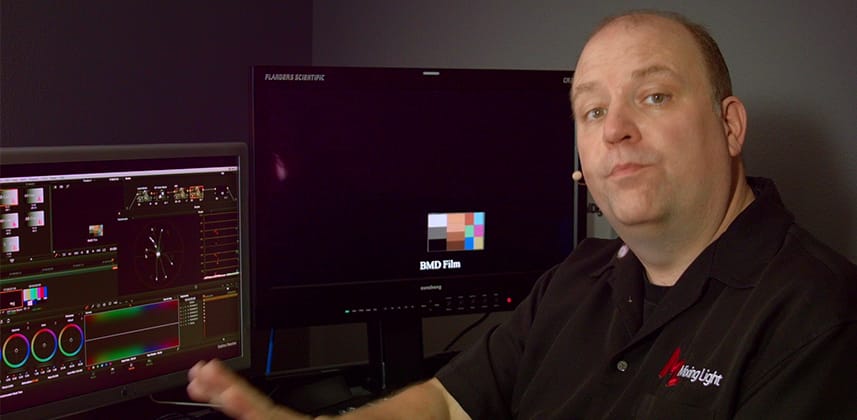| Series |
|---|
How to Build Your Own Manual ‘Color Matching’ Node in DaVinci Resolve 11
In previous Insights we’ve explored why using Resolve 11’s Color Match feature is so hard. We then took our conclusions about how that feature works to develop a workflow for more consistent results when using Resolve’s Color Match tool.
Of course, with a basic workflow in place – we can riff ‘variations on a theme’ to further refine our workflow. And why would we do that? Because there are endless variations of cameras, lighting, subject matter, lenses, exposures, recording formats, and bit depths that expecting a single workflow to work every time… it’s totally unrealistic.
When you decide to ‘up your game’ and take color correction seriously – you need to develop workflows that are adaptable. In this Insight, we’re doing just that…
Learn how to adapt by manually replicating the ‘Color Match’ function
This Insight is yet another strategy for both understanding how the Color Match tool works… and riffing on it to adapt your workflow when Resolve’s Color Match feature isn’t working… even if you’ve taken my advice to do a manual Brightness match first.
Yes, the “Brightness First then Color Match” Rule will fail you
It’s inevitable.
The question is: What are you going to do after it fails?
In this Insight, we’ll deepen our understanding of the Resolve’s Color Match tool by bypassing it completely and introduce to you a strategy for building a Manual Color Matching node in DaVinci Resolve 11.
Learn how to skip the Color Match tool
In the process of skipping the Color Match tool – you’ll learn how to build a Manual Color Matching tool that does almost precisely what the Color Match tool does… but is infinitely more adjustable by removing the ‘Black Box’ aspect to that tool. This also means you’ll be able to Color Match using test charts from any manufacturer—not just the ones built into Resolve.
In fact, I wouldn’t be surprised if some of you find this workflow to be much more efficient for color matching than Resolve’s built-in Color Match tool.
Ask questions because I’ll be answering
Quite a few questions have popped up in the comments for this series. Many of them are very Insightful and have suggested variations of the ‘Brightness First Rule’ that are worth exploring.
I’ll wait a week or two before recording the next installment of this Series – so you can ask questions. If you do, there’s a good chance I’ll integrate some of your queries into the ‘Answering Member Questions’ portion of this DaVinci Resolve 11 ‘Color Match’ Series.
– pat
Member Content
Sorry... the rest of this content is for members only. You'll need to login or Join Now to continue (we hope you do!).
Need more information about our memberships? Click to learn more.
Membership optionsMember Login


